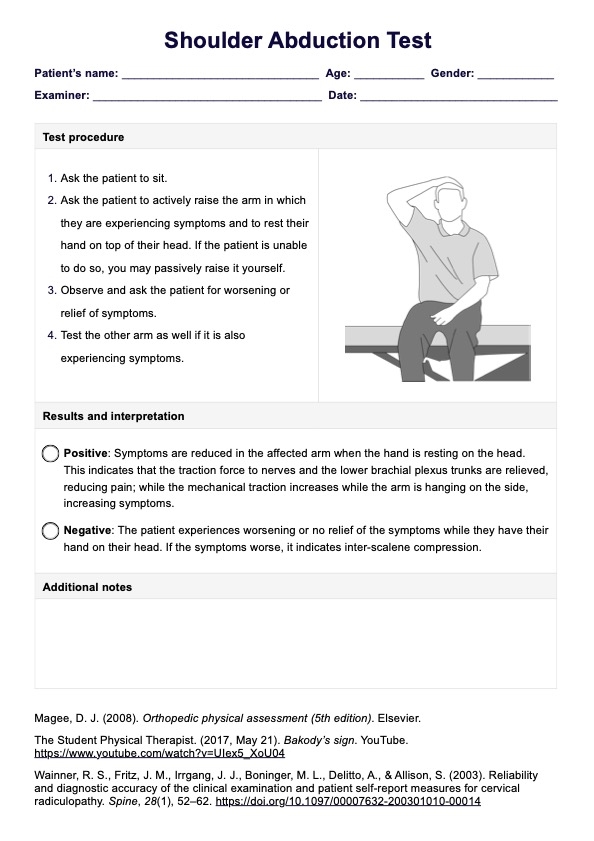Shoulder abduction is the movement of the arm away from the body in the coronal plane, achieved by raising the arm laterally, such as when lifting it to the side or over the head. This movement involves the deltoid and supraspinatus muscles, which work to stabilize and elevate the shoulder joint.

Shoulder Abduction Test
Learn more about performing the Shoulder Abduction Test here, to see if your patient's shoulder pain involves their cervical nerves. Try our template today.
Shoulder Abduction Test Template
Commonly asked questions
A positive Bakody's sign, the result of a positive Shoulder Abduction Test, occurs when the patient experiences relief from radicular pain while their hand is resting on the head. This result indicates reduced traction on the cervical nerve roots or brachial plexus, which alleviates symptoms.
To test shoulder adduction, instruct the patient to move their arm back toward their body’s midline after abduction. Resistance can be applied to evaluate strength and stability. This movement primarily involves the pectoralis major, latissimus dorsi, and teres major muscles, and it assesses functional integrity of the shoulder joint and surrounding musculature.
EHR and practice management software
Get started for free
*No credit card required
Free
$0/usd
Unlimited clients
Telehealth
1GB of storage
Client portal text
Automated billing and online payments











